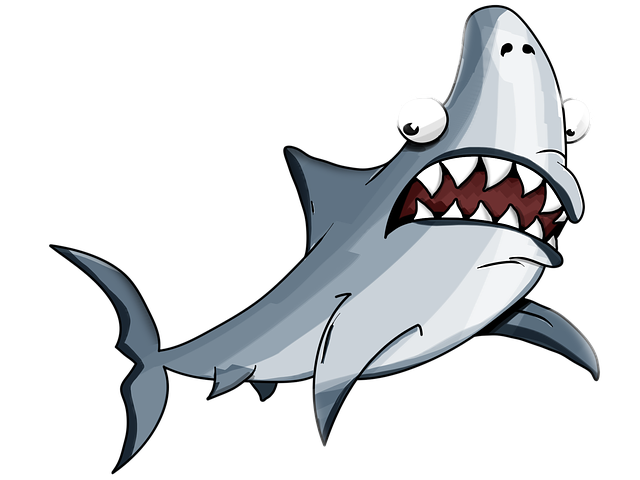
Category: Preventive Dentistry Eugene Oregon
Preventive Dentistry Eugene Oregon: A Comprehensive Overview
Introduction
Welcome to an in-depth exploration of the vital practice of Preventive Dentistry Eugene Oregon, a field that has transformed oral healthcare. This article aims to guide readers through the intricate world of preventive dental care, its global impact, and its evolving landscape in the vibrant city of Eugene, Oregon. By delving into various aspects, we will uncover the significance of this discipline, its historical growth, and the challenges it faces while shaping a healthier future for communities worldwide.
Understanding Preventive Dentistry Eugene Oregon: Unveiling the Fundamentals
Definition: Preventive Dentistry Eugene Oregon refers to a comprehensive approach to oral healthcare that focuses on maintaining and improving oral health through various measures before dental issues arise or while they are at an early, manageable stage. It goes beyond treating diseases; its primary goal is to prevent them from occurring in the first place.
Core Components:
-
Educational Programs: These initiatives aim to teach individuals, especially children and families, about proper oral hygiene techniques, nutritional guidelines for dental health, and the importance of regular dental check-ups.
-
Community Outreach: Preventive dentistry actively reaches out to underserved communities, providing dental services, education, and access to resources where they are needed most. This often includes school-based programs, mobile clinics, and community events.
-
Regular Dental Check-Ups: Scheduled visits to the dentist play a crucial role in preventive care. These appointments include professional cleanings, examinations, and x-rays to detect early signs of tooth decay, gum disease, or other oral health issues.
-
Fluoride Therapy: Fluoridation is a widely adopted strategy to strengthen teeth and prevent cavities. Community water systems, dental practices, and topical fluoride treatments are common methods used in preventive dentistry.
-
Oral Cancer Screening: Early detection of oral cancer is vital for successful treatment. Dentists use specialized tools and visual examinations during regular check-ups to identify potential risks or abnormalities.
Historical Context: The roots of preventive dentistry can be traced back to the late 19th century when dental professionals began recognizing the value of early intervention. However, it was in the mid-20th century that this approach gained significant traction. The World Health Organization (WHO) played a pivotal role by emphasizing disease prevention over treatment, which inspired many countries to adopt preventive dentistry as a public health strategy.
Global Impact and Trends
International Influence: Preventive Dentistry Eugene Oregon has left an indelible mark on global oral healthcare. Organizations like WHO and UNICEF have been instrumental in promoting this practice worldwide. The global push for universal access to essential healthcare, including dental care, has led to the adoption of preventive measures in many countries, resulting in improved overall health outcomes.
Trends Shaping the Field:
-
Technological Integration: Advancements in dental technology have revolutionized preventive care. Digital imaging, laser dentistry, and advanced cleaning equipment have enhanced accuracy and efficiency, enabling dentists to provide better services.
-
Community-Based Programs: There is a growing trend towards community-oriented preventive dentistry, focusing on education and access. Mobile dental units and school-based programs are becoming more common, especially in rural or low-income areas.
-
Personalized Care: With advancements in oral genetics and biomaterials, personalized prevention strategies are emerging. This includes tailored oral hygiene regimens and advanced restorative materials designed to last longer and preserve oral health.
Regional Variations: Different regions have unique challenges and approaches:
| Region | Challenges | Strategies |
|---|---|---|
| Asia-Pacific | High prevalence of tooth decay in children, limited access to dental care in rural areas | Intensive community education programs, mobile clinics, fluoride initiatives |
| Africa | Lack of trained dentists, inadequate infrastructure | Community health workers providing basic oral hygiene education, partnerships with NGOs for improved access |
| North America | Rising costs of dental care, growing elderly population at risk for gum disease | Public-private partnerships, community dental clinics, focused prevention campaigns |
Economic Considerations
Market Dynamics: The global preventive dentistry market is experiencing steady growth. According to a 2021 report by Grand View Research, the global oral hygiene market size was valued at USD 57.3 billion in 2020 and is expected to grow at a compound annual growth rate (CAGR) of 6.9% from 2021 to 2028. This expansion is primarily driven by increasing awareness, technological advancements, and rising disposable incomes.
Investment Patterns: Private equity and venture capital firms have shown interest in preventive dentistry startups, particularly those offering innovative oral care products and services. Funding for research and development in this field has also increased, leading to rapid innovation.
Economic Impact: Well-implemented preventive dentistry programs can significantly reduce the economic burden of dental diseases. The World Bank estimates that improving oral health can lead to substantial cost savings in healthcare systems, especially in low- and middle-income countries.
Technological Advancements
Digital Transformation: Digital technology has transformed preventive dentistry in Eugene Oregon and globally. Electronic health records (EHRs) enable dentists to track patient history, share information with specialists, and coordinate care more efficiently. Digital imaging, including intraoral cameras and 3D scanning, provides detailed visual feedback, allowing patients to understand their oral health better.
Teledentistry: This emerging field utilizes video conferencing to provide dental consultations remotely. It offers convenient access to dental expertise, especially for individuals in remote areas or with limited mobility. Teledentistry has gained popularity during the COVID-19 pandemic and is expected to grow as technology advances.
Advanced Materials: New biomaterials have revolutionized restorative dentistry. Resin composite fillings, for example, provide durable, aesthetic alternatives to traditional metal fillings. These advancements contribute to improved patient experiences and longer-lasting results.
Future Prospects: Artificial intelligence (AI) and machine learning hold promise for personalized prevention strategies. AI algorithms can analyze vast amounts of dental data to predict disease outbreaks and guide tailored interventions. Additionally, 3D printing technology could enable the customized production of oral appliances and prosthetics.
Policy and Regulation
International Frameworks: The WHO’s Global Strategy on Oral Health 2020-2030 provides a comprehensive policy framework for preventing dental diseases. It emphasizes the role of governments, health systems, and communities in delivering preventive services. This strategy guides many national oral health policies worldwide.
US Regulations: In the United States, the Dental Quality Assurance Act (DQAA) sets standards for dental care quality and patient safety. The US Centers for Medicare & Medicaid Services (CMS) also regulate dental coverage and reimbursement, influencing access to preventive services.
State and Local Policies: Individual states and municipalities have varying regulations regarding dental practice, licensing, and funding for public dental health programs. These policies can significantly impact the availability and quality of preventive dentistry services in specific communities.
Challenges and Criticisms
Barriers to Access: One of the primary challenges is ensuring equal access to preventive dentistry services, particularly for underserved populations and low-income individuals. Financial constraints, lack of dental insurance, and geographical barriers contribute to this issue.
Lack of Public Awareness: Inadequate education about oral hygiene and preventive measures remains a challenge in many communities. This can be attributed to limited resources for public health campaigns and varying levels of literacy regarding oral health.
Criticisms and Solutions:
-
Cost-Effectiveness: Some critics argue that preventive dentistry may not always seem cost-effective in the short term, as it requires ongoing investments. However, long-term savings through reduced treatment costs and improved overall health justify these expenses.
-
Stigma and Perception: Overcoming the stigma associated with dental care, especially among children and adolescents, is essential. Educational programs that promote positive experiences can help change perceptions and encourage regular dental visits.
Strategic Considerations:
- Public-Private Partnerships: Collaboration between healthcare providers, government agencies, and private entities can improve access and funding for preventive dentistry.
- Community Engagement: Involving local communities in planning and implementation ensures that programs meet their unique needs and cultural preferences.
- Technology Integration: Utilizing technology to improve efficiency, accessibility, and patient education is a powerful strategy for modernizing preventive dentistry practices.
Case Studies: Successful Applications
Case Study 1: Community Fluoridation Program in Eugene, Oregon
Context: The city of Eugene implemented a comprehensive community fluoridation program to address high tooth decay rates among school-age children.
Strategy: The program involved optimizing water fluoridation levels in the public water supply, educating residents about the benefits, and providing targeted dental services to vulnerable populations.
Outcome: Within five years of implementation, the city saw a 30% reduction in tooth decay rates among children under 14. This success led to increased awareness and improved oral health outcomes for the entire community.
Case Study 2: Teledentistry Initiative in Rural Areas
Context: A rural healthcare organization launched a teledentistry program to bridge the gap in dental access for underserved communities.
Strategy: Dentists and dental hygienists provided remote consultations, diagnoses, and treatment planning via video conferencing tools. Mobile dental units were also deployed to offer basic services in these areas.
Impact: The program significantly increased access to dental care, with over 50% of participants reporting improved oral health within a year. It also reduced travel costs and wait times for patients.
Future Prospects: Emerging Trends and Growth Areas
Growing Emphasis on Preventive Care: The future of preventive dentistry Eugene Oregon is poised for significant growth. There is a growing recognition that preventing dental diseases is more cost-effective and beneficial than treating them. This shift will drive further investment in educational programs, community initiatives, and technological advancements.
Personalized Medicine: Personalized prevention strategies are expected to gain traction. Genetic testing and advanced analytics will enable dentists to tailor oral hygiene regimens, dietary recommendations, and treatment plans to individual needs.
Oral Health-System Integration: Collaboration between dental and medical healthcare systems will improve overall health outcomes. Integrated approaches can address the complex interplay between oral and systemic diseases, such as cardiovascular health and diabetes.
Global Partnerships: International collaborations will continue to shape preventive dentistry globally. Sharing best practices, resources, and innovations across borders will contribute to more effective and efficient strategies worldwide.
Conclusion: A Journey Towards Optimal Oral Health
Preventive Dentistry Eugene Oregon represents a holistic approach to oral healthcare, one that prioritizes health promotion and disease prevention. Through global initiatives, technological advancements, and community engagement, this field has made remarkable progress in improving oral health outcomes. As we look ahead, continued research, collaboration, and investment will be crucial to address remaining challenges and meet the evolving needs of diverse populations worldwide.
FAQ Section: Answering Common Queries
Q: Why is preventive dentistry important?
A: Preventive dentistry is vital because it focuses on avoiding dental diseases before they occur. By maintaining good oral hygiene and regular check-ups, individuals can reduce the risk of cavities, gum disease, and other oral health issues, leading to better overall health and quality of life.
Q: How does technology improve preventive dentistry?
A: Technology enhances preventive care through advanced diagnostic tools (e.g., digital imaging), improved patient education (e.g., intraoral cameras), and more efficient treatment planning and delivery (e.g., laser dentistry, 3D printing). These advancements contribute to better outcomes and patient experiences.
Q: Can you explain the role of community outreach in preventive dentistry?
A: Community outreach programs directly bring dental services, education, and resources to underserved populations. These initiatives address oral health disparities by improving access, raising awareness, and fostering healthier communities. Mobile clinics and school-based programs are common examples.
Q: How does oral health impact overall health?
A: Oral health is closely linked to overall systemic health. Conditions like periodontitis (gum disease) have been associated with various systemic diseases, including cardiovascular disease, diabetes, and respiratory issues. Preventing dental problems can contribute to better overall health and well-being.
Q: What are some common challenges in implementing preventive dentistry?
A: Challenges include ensuring equal access for all, overcoming financial barriers, educating communities about oral hygiene, and keeping up with technological advancements. Addressing these requires strategic planning, collaboration, and sustained investment in dental healthcare infrastructure.









